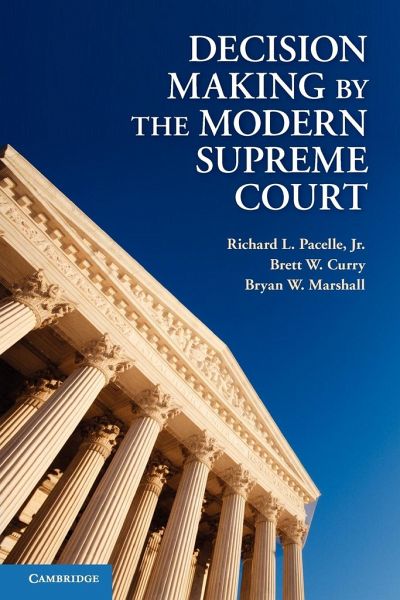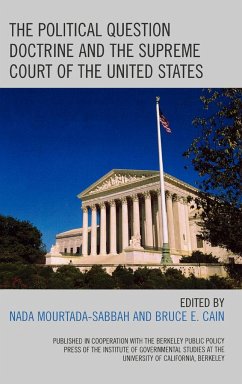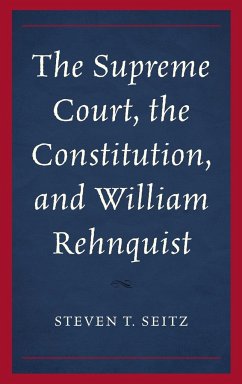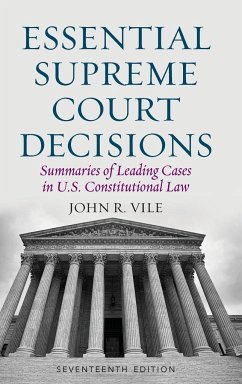
Decision Making by the Modern Supreme Court
Versandkostenfrei!
Versandfertig in 1-2 Wochen
36,99 €
inkl. MwSt.

PAYBACK Punkte
18 °P sammeln!
There are three general models of Supreme Court decision making: the legal model, the attitudinal model and the strategic model. But each is somewhat incomplete. This book advances an integrated model of Supreme Court decision making that incorporates variables from each of the three models. In examining the modern Supreme Court, since Brown v. Board of Education, the book argues that decisions are a function of the sincere preferences of the justices, the nature of precedent, and the development of the particular issue, as well as separation of powers and the potential constraints posed by th...
There are three general models of Supreme Court decision making: the legal model, the attitudinal model and the strategic model. But each is somewhat incomplete. This book advances an integrated model of Supreme Court decision making that incorporates variables from each of the three models. In examining the modern Supreme Court, since Brown v. Board of Education, the book argues that decisions are a function of the sincere preferences of the justices, the nature of precedent, and the development of the particular issue, as well as separation of powers and the potential constraints posed by the president and Congress. To test this model, the authors examine all full, signed civil liberties and economic cases decisions in the 1953-2000 period. Decision Making by the Modern Supreme Court argues, and the results confirm, that judicial decision making is more nuanced than the attitudinal or legal models have argued in the past.














